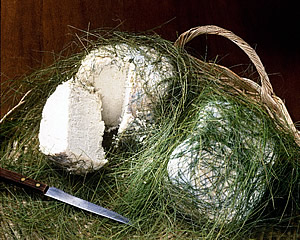Mid-Week Mini Vaca
We went to Torino last night to participate in the Gusto del Territorio – an iniziative to promote typical products from various regions of Italy and unite chefs young an old for an exchange of innovative ideas. In short, we ate and drank for four hours. The event (part of a series) was hosted by the restaurant L’Birichin with guest chef Walter Miori from Trentino. It was an awesome night. Here’s what we had (I’ll let you use your imagination):
Menu
Aperitivo Welcome – Isac Le Baladin e Super Baladin – Birrificio Le Baladin
Spuma di seirass (see below) ed agro di mosto San Giacomo
Polentina di Storo con sarda in saor
Tartare di “carne salada” con verdurine e bavarese agli asparagi
Canederlotti alla verza e puzzone di Moena su burro e tartufo del Baldo
Pancia di maiale con polenta di patate porri alla crema con tartufo nero, salsa al miele Valdivia
Guayaba, frutto della passione ed Olio Terre Rosse
La torta sbriciolina con zabaione al Maso Grill
Bicchierino alla cioccolata modicana Quetzal, grappa Solera Selezione e gelatina al tabacco
Wines
Tenuta Podernovo Tenuto igt Toscana
Lunelli Maso Grill
———————————
 Seirass –
Seirass –
Cow’s, Goat’s & Ewe’s Milk Whey
The name Seirass, Seras derives from the Latin Seracium and is the local name for Ricotta in Piedmont and Valle d’Aosta. The product has many different forms in the region, ranging from rounded cones to cylinders or an upturned basketshape. When dried and salted, it may have a roundish shape and varies in weight. The cheesemaking technique is the classic Ricotta method – the whey is heated to 90°C – with the difference that Seirass del Fen whey comes from mountain dairy milk used to make Toma cheese. As is well-known, the whey of soft cheeses produces soft Ricottas while whey from cooked cheeses gives a more solid product. It is also difficult to obtain ricotta from pasteurised milk naturally. After 12-36 hours, the Seirass is taken out of its moulds or cloths and kneaded by hand with white salt. It is then exposed to the atmosphere. This operation is repeated several times. The cheeses are then placed in a dry, well-ventilated room to dry, after which they are wrapped in freshly cut hay (fieno or fen). In some cases, the Seirass is also lightly smoked.
Body: the fresh cheese has a delicate, lumpy body while the mature version has a firm, translucent, brownish-white or straw-white body.
Height/weight: varying from 2-5 kg
Territory of origin: Seirass is made almost everywhere in Piedmont, but hay maturing is typical of the valleys around Pinerolo.

Sounds like it was fun! Some of us need translations though.. haha 😀 We had one of the last of the wines you gave us for our wedding tonight! We’ve been savoring them all this time, lol ! It was one of the reds from Alba – uber tasty!! Speaking of extreme food experiences, I was really hoping to go to Charlie Trotter or Rick Bayless’s restaurants when we go to Chicago but it doesn’t look like it’s going to happen… we’re there on Sunday and Monday night and neither one of them is even open either night!! What the heck. Surely one of them can open up and create the tasting menu just for us?? LOL haha. Instead we’ll eat lots of hot dogs and deep dish pizza. Not that I’m complaining about that.. haha 🙂 Hope everything’s going well with you! ttys! Love,Carrie